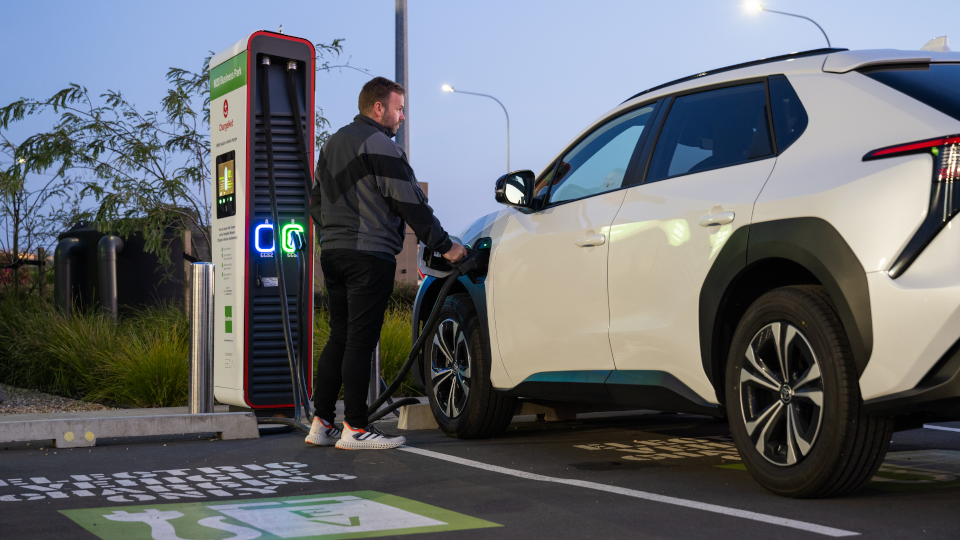Toyota Hybrid Range
Convenience and efficiency
For decades, Toyota has been a leader in Hybrid Electric Vehicles, combining the fuel efficiency and lower emissions of an electric motor with the predictability of a combustion engine. With models ranging across RAV4, Corolla, Camry, C-HR, Land Cruiser Prado, Highlander, Hilux, and Yaris — our hybrid range has something for everyone.Cleaner, more cost-effective driving.
Because they’re partly powered by an electric motor, Hybrids produce less CO2 and other emissions than a comparable petrol or diesel vehicle. So, they’re easier on the planet, as well as your wallet. The increased fuel efficiency of a Hybrid means you’ll need to visit the pump less often, and you'll get more kilometres out of every dollar you spend on fuel.
Great driving range, less maintenance.
A Hybrid Electric Vehicle can travel a similar distance to a conventional car before needing to refuel, so you won't need to worry about getting caught short. Plus, with no need for parts such as a clutch, alternator or a starter motor, there’s less to maintain. And regenerative braking technology reduces the wear and tear on your brake pads. It all adds up to reducing costs at your next service visit.
What is the Toyota Hybrid System?
Hybrid Electric Vehicles get their power from both an electric motor and a conventional petrol engine. They seamlessly switch between the two, depending on the driving situation, to choose the most efficient power combination for your journey. The hybrid battery recharges from the petrol engine while you’re driving, as well as through capturing energy from regenerative braking, so it never needs to be plugged in.
What is a 48V Hybrid System?
A 48V hybrid system combines a turbo diesel engine with a 48V lithium-ion battery, electric motor-generator and other components.
48V hybrid systems improve fuel economy without sacrificing any towing or off-road capability. The diesel engine always drives the wheels with the electric motor providing assistance, which improves throttle response, and reduces noise, vibration and harshness.
Learn More

Safe. Sound. Smart.
Toyota Safety Sense is a clever package of active safety systems designed to keep you and your passengers protected in all types of traffic. Around town and at lower speeds, Toyota Safety Sense can help prevent collisions. While on the open road and at higher speeds, it aims to reduce the severity of any impact with leading safety technology.1

Everything you need to stay on the road
Every new Toyota comes with a value package to help you get the best value for up to the first five years of ownership. This includes up to 5 years capped price servicing coverage, 5 years warranty, 5 years roadside assistance and 5 years WoF coverage. We’ll even include all on-road costs. How’s that for value?2

Electric options for every journey
Toyota has a complete range of electrified vehicles to suit all Kiwis, no matter their lifestyle. That’s why many of our SUV models are now available as Hybrids.
1. Toyota Safety Sense (TSS) is not available for all models and grades. For more information about the availability of TSS driver assist packages for Toyota models and grades, contact your local Toyota Store or visit the range page of your preferred vehicle at toyota.co.nz
TSS are driver assist safety packages only, designed to operate when certain technical conditions are met, and its features are not a substitute for safe driving practices. The driver remains responsible at all times for safe driving. For more information, refer to your vehicle's owner’s manual.
2. T&Cs, KM limits, and servicing criteria apply. Unless otherwise stated, Toyota Driveaway Price excludes any fee, levy, or rebate that applies by law to your purchase.